READY TO GET STARTED?
REQUEST A FREE ESTIMATE
Fill out the form below or call (888) 466-7849 for a free, no-obligation estimate.
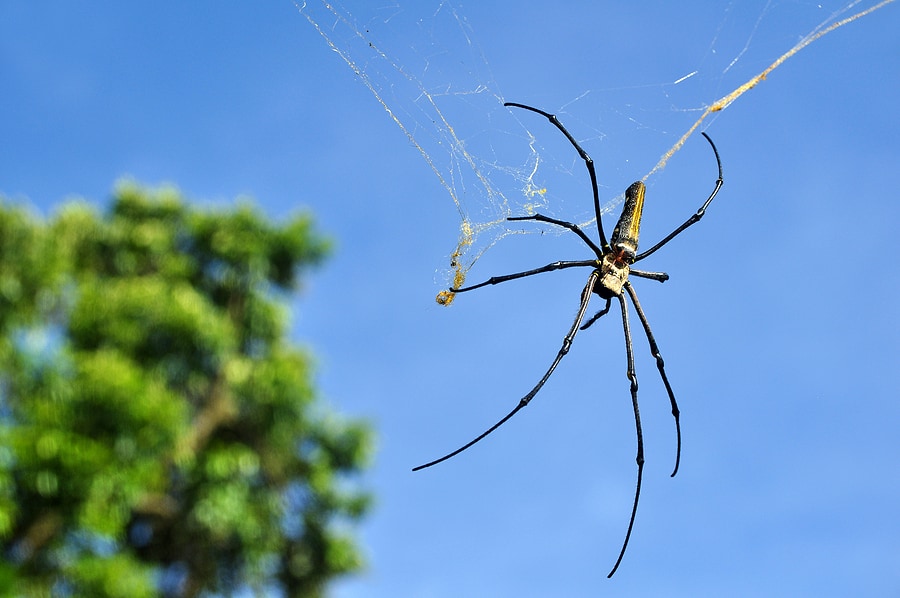
Orb weaver spiders, or orb weavers, are a group of spiders named for their ability to produce round, orb-like webs. They make up the family Araneidae, one of the most diverse groups of arachnids in terms of both size and appearance. Despite their differences, they all have one thing in common: their ability to create large, majestic webs. These webs are circular in shape with grids similar to the spokes of a wheel. Some webs can even measure up to 3 feet in diameter. Let’s take an in depth look to learn all you need to know about orb weavers.
Orb weavers have body types similar to other spiders with 8 legs; 2 body parts (a cephalothorax and abdomen), and chelicera (mouthparts that look like fangs). They range in size from 1.5 to 3 cm. Some are brightly colored, while others are brown or gray. They have large abdomens and hairy legs.
Orb weavers are typically nocturnal and will often build or repair their webs at night. They do not hunt or wander for their food. Instead, they utilize their expansive web making skills to catch their prey. They will usually sit in their webs after they are built waiting for prey to become ensnared. Sometimes they will hide nearby and leave a trigger line of silk connected to the web. The vibrations from the prey run down the line and alert them. They will then bite and paralyze their prey and wrap it in silk to save for dinner later. Orb weavers are most commonly seen in late summer and early fall.
An orb weaver’s diet usually consists of small insects like moths, wasps, beetles, flies, and mosquitoes. Larger spiders will also eat small frogs and hummingbirds.
Orb weavers will take up residence where there is an abundance of prey for them to eat. They can often be found around outdoor lights, tall grass, weeds, fences, bushes, and walls. They can be found in any environment including gardens, grasslands, and cities. Orb weavers are found on every continent except Antarctica and in the Arctic. There are 2800 species worldwide and 180 species in North America.
Prevention is not necessary with orb weavers unless their web is constructed in an inconvenient area or an area with high human traffic. In fact, they can be beneficial to have around as they help keep other pests under control around your home. They don’t cause structural damage and they rarely bite (only if threatened and they cannot escape). Their bite has been compared to a bee sting. You can reduce the chances of having orb weavers around by:
If you have a problem with orb weavers or any other pests, contact your local pest control company for an evaluation and treatment plan.
3 Ways You’re Letting Ants Inside Your Home
How to Get Rid of Ants Outside of Your Home
7 Natural Ways to Keep Snakes Away
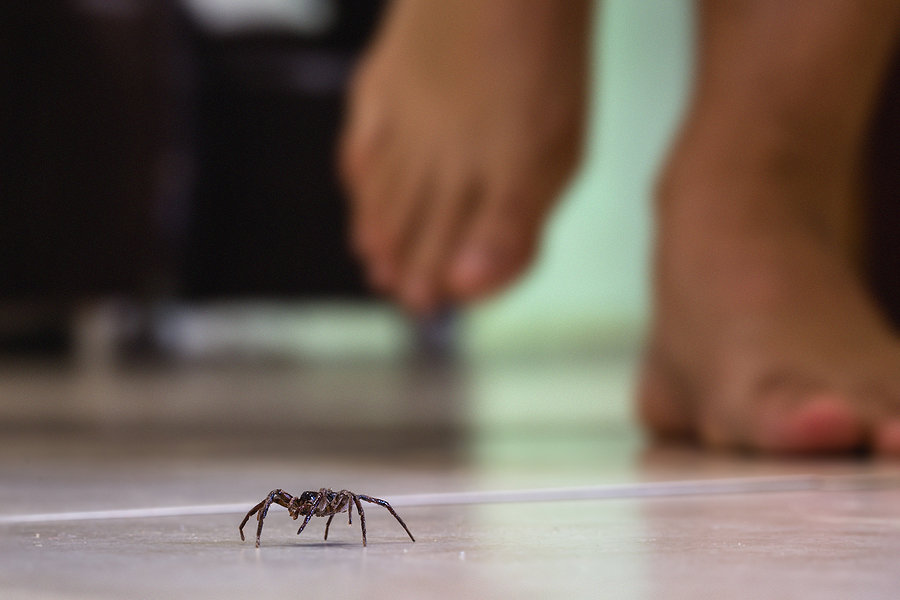
Spiders are considered year-round pests, but they seem to come out in full force during the summer months. Some common spiders you may encounter this summer include wolf spiders, orb weavers, garden spiders, house spiders, brown recluse spiders, and black widow spiders. While most of these are harmless, brown recluses and black widows can be dangerous to humans with their venomous bites.
The spiders you see in the summer most likely aren’t just now making their way into your home; there’s a good chance they’ve already been hiding out inside for a while. They will commonly emerge in large numbers in the summer for two main reasons:
Seeing a spider here and there inside your home is usually nothing to worry about; they can sneak in through open windows, doors, etc. Seeing them in large numbers, however, can indicate a much bigger problem. Spider infestations can be the result of:
Having a spider infestation in your home can leave you with webs everywhere, the risk of spider bites that can be painful and potentially dangerous, and the possibility of other pest infestations, as well. You can keep spiders out by:
If you have a problem with spiders, contact your local pest control company for a thorough inspection and treatment plan.
Controlling Birds During the Summer Months
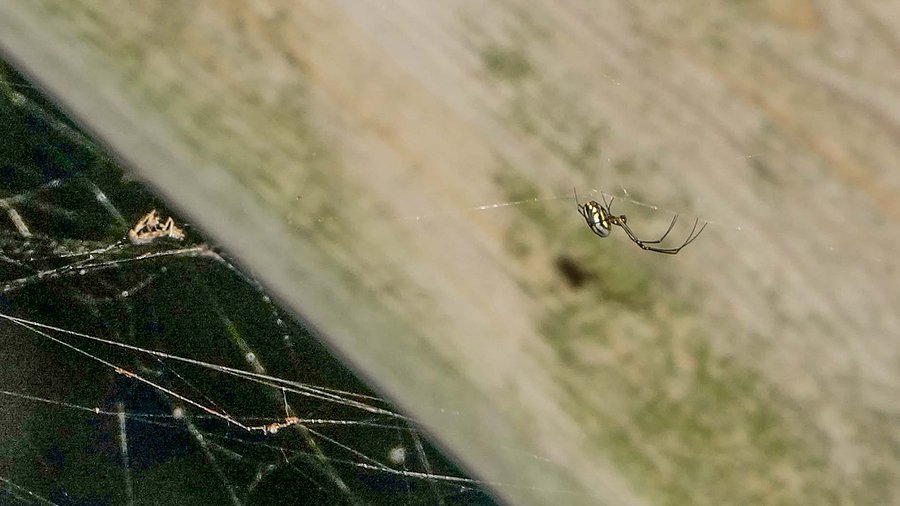
Spotting a spider inside your home is always alarming! While most of the spiders we encounter are non-venomous, spotting a venomous spider is still possible. Every homeowner should be aware and up to date with the type of spider species located in the South Florida area and how to prevent them.
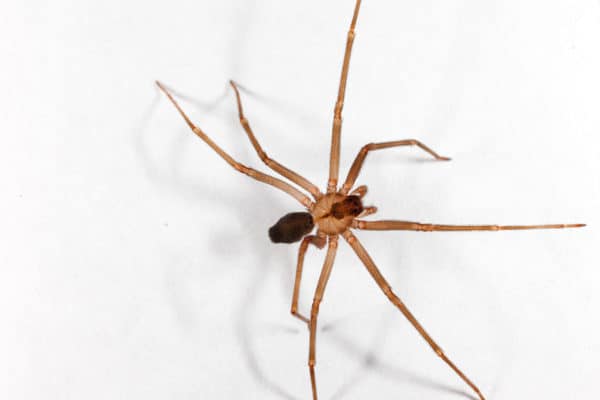
Known as the violin or the fiddleback spider, the brown recluse is light brown with a dark, violin-shaped marking on its back. These pests are usually found outdoors under rocks, woodpiles, logs, etc. but will seek indoors for shelter too. Once they have infested your home, they seek out dark, secluded areas during the day but are active at night to hunt. Common places you can find these spiders are attics, garages, and basements.
While these spiders are not typically aggressive, they will bite if trapped against a human, such as rolling on them in bed or stepping on them in a shoe. If bitten by these spiders, the bite can cause an infection, becoming red, swollen, and tender. It’s best to get the wound treated as soon as possible.
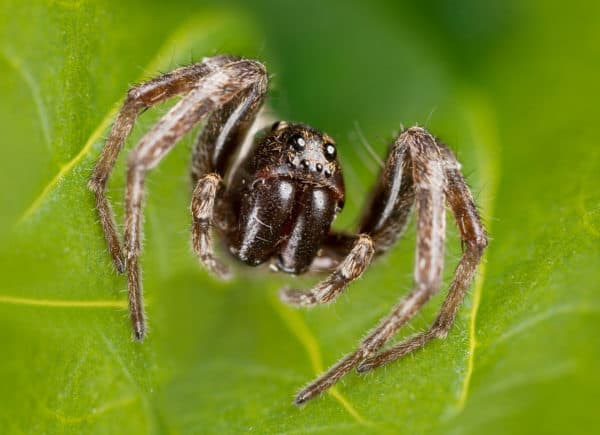
Wolf spiders are dark in color with pale markings and fairly long legs. Because of their coloring and hairy bodies, they are well-camouflaged, often hiding under piles of leaves, rocks, and logs. If wolf spiders find their way inside your home, they usually stay close to the floor. You can typically find them on the walls underneath furniture.
While wolf spiders can bite, these incidents are rare and don’t pose a significant threat to humans.
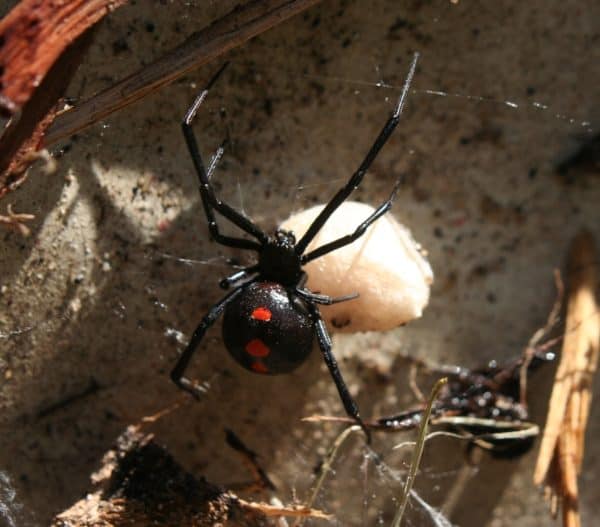
Shiny and black, the black widow spider has a prominent red hourglass shape on the underside of its abdomen. The black widow spider is venomous, and its bite can be extremely painful. These pests often hitchhike through firewood as they like to hide in woodpiles. Once inside, they often seek out undisturbed places in the home. They are known to habitat in empty boxes, inside shoes, and eaves.
If disturbed, these spiders will bite, and it can cause serious reactions. Some reactions to a black spider bite include developing a fever, elevated blood pressure, sweating, nausea, and more. While death is uncommon if bitten, it is important to get treatment as soon as possible.
To prevent spiders from invading your home, consider placing do-it-yourself preventative measures to help avoid them.
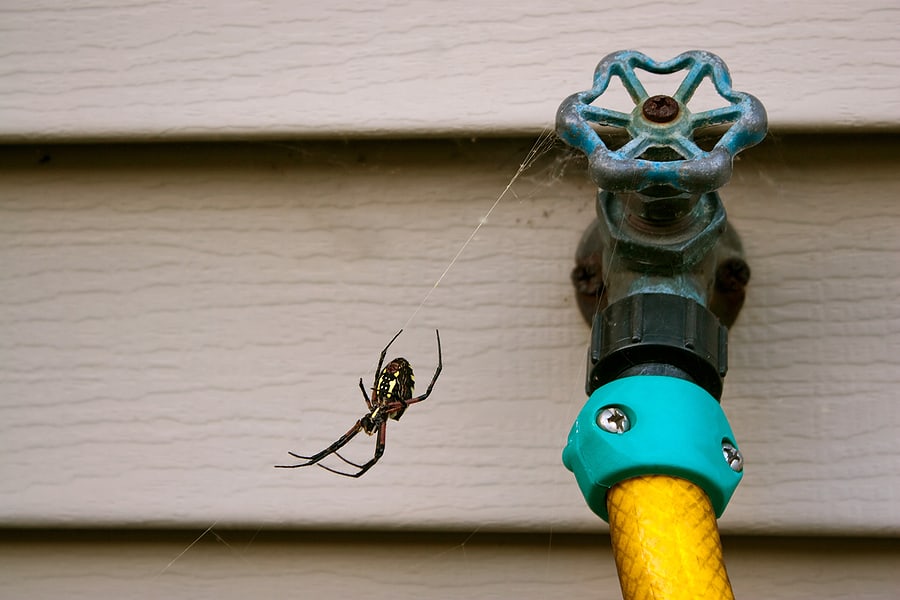
Although spiders are considered a year-round pest, they become more visible and active in the spring. Overwintering pests like spiders emerge as the weather warms up to lay eggs for the approaching season. Spiders are predators, preying on smaller insects for food. They are usually not a huge threat to humans with only a few venomous species in our area. In fact, they can be quite beneficial to have around your home, working as a form of natural pest control by eating other insects you may have around.
If the thought of sharing your home with spiders creeps you out, don’t fret! Here are some spider prevention tips you can use this spring to help keep these pests out.
Protecting Your Pets from Fleas and Ticks
What Happens During the Bee Relocation Process?
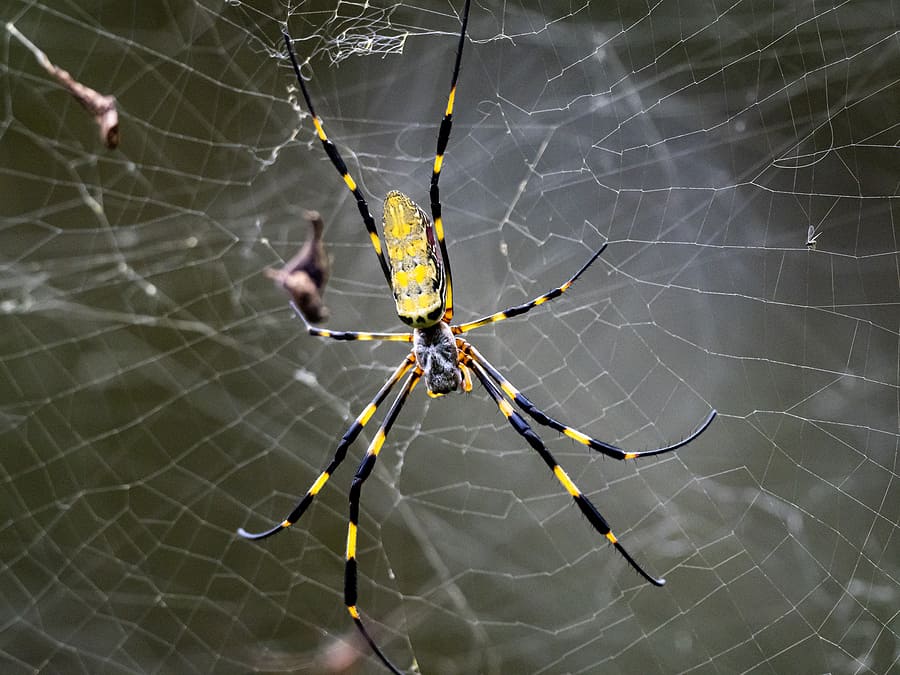
The Joro spider, also known as Trichonephila clavata, is a member of the recognizable orb weaver family. These particular spiders are characterized by their large size (up to 3 inches in length with their legs extended) and yellow and blue-black striped backs with red undersides. Joro spiders are known for constructing large, wagon-wheel shaped webs that are a golden color. These webs can be several feet in length.
Joro spiders are native to Asia, particularly Japan, China, Korea, and Taiwan. In 2014, the first instance of the Joro spider in North America was confirmed in North Georgia. Subsequent sightings have been confirmed as far away as Greenville, South Carolina. It is unclear how and when these spiders first arrived here in Georgia but researchers believe they are here to stay. In fact, researchers have confirmed their presence in at least 25 counties in the state.
Joro spiders are not considered harmful to humans or pets. They will bite when provoked but are not considered a threat. Joros are beneficial to have around as they are one of the only species known to eat adult brown marmorated stinkbugs. They also help keep mosquito and other nuisance pest populations in check. Joro spiders do have predators in our area; both birds and wasps will eat them.
The jury is still out on whether or not there will be any long-term ramifications on local ecosystems. One thing all the researchers agree on is that the Joro spider is likely here to stay.
Are Carpenter Ants Active During the Winter?
Why Identifying Spiders is Important for Prevention